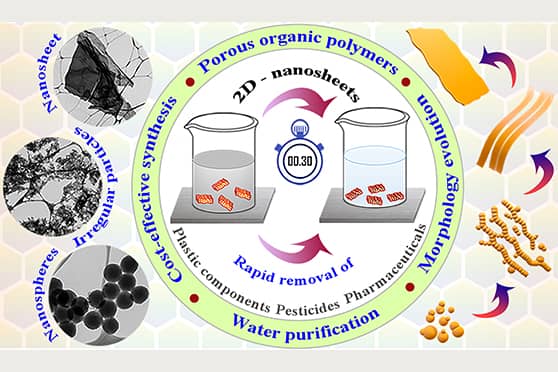IISER Bhopal develops organic polymers to remove micropollutants from water


Indian Institute of Science Education and Research Bhopal (IISERB) researchers have developed organic polymers that can remove highly polar organic micropollutants (POMs) from water. This process will render the water safe for consumption.
These polymers have already been tested for polar organic micropollutants removal at a laboratory scale. Large-scale fabrication of these materials in collaboration with industrial partners will open up a promising avenue for real-time scavenging of toxic polar organic micropollutants from water.
Called hyper-crosslinked porous organic polymers (HPOPs), a teaspoon of the powder of these polymers will cover an internal surface area of 1,000-2,000 m2/g, which is close to 10 tennis courts.
The main advantages of these HPOPs include:
The research was led by Abhijit Patra, associate professor, department of Chemistry, IISER Bhopal, at the Functional Materials Laboratory of the institute. The team comprised Arkaprabha Giri, PhD student, Subha Biswas, former BS-MS student, currently pursuing Ph.D. at IISc Bangalore, MD Waseem Hussain, former Ph.D. student, Tapas Kumar Dutta.
This project was funded by the department of science and technology (DST), Government of India, under the ‘Centre for Sustainable Treatment, Reuse and Management for Efficient, Affordable and Synergistic solutions for Water’ (WATER-IC for SUTRAM of EASY WATER) initiative.
The major organic micropollutants found in the surface water bodies are:
The findings have been published in the reputed, peer-reviewed journal of the American Chemical Society, ACS Applied Materials and Interfaces (https://doi.org/10.1021/acsami.1c24393)